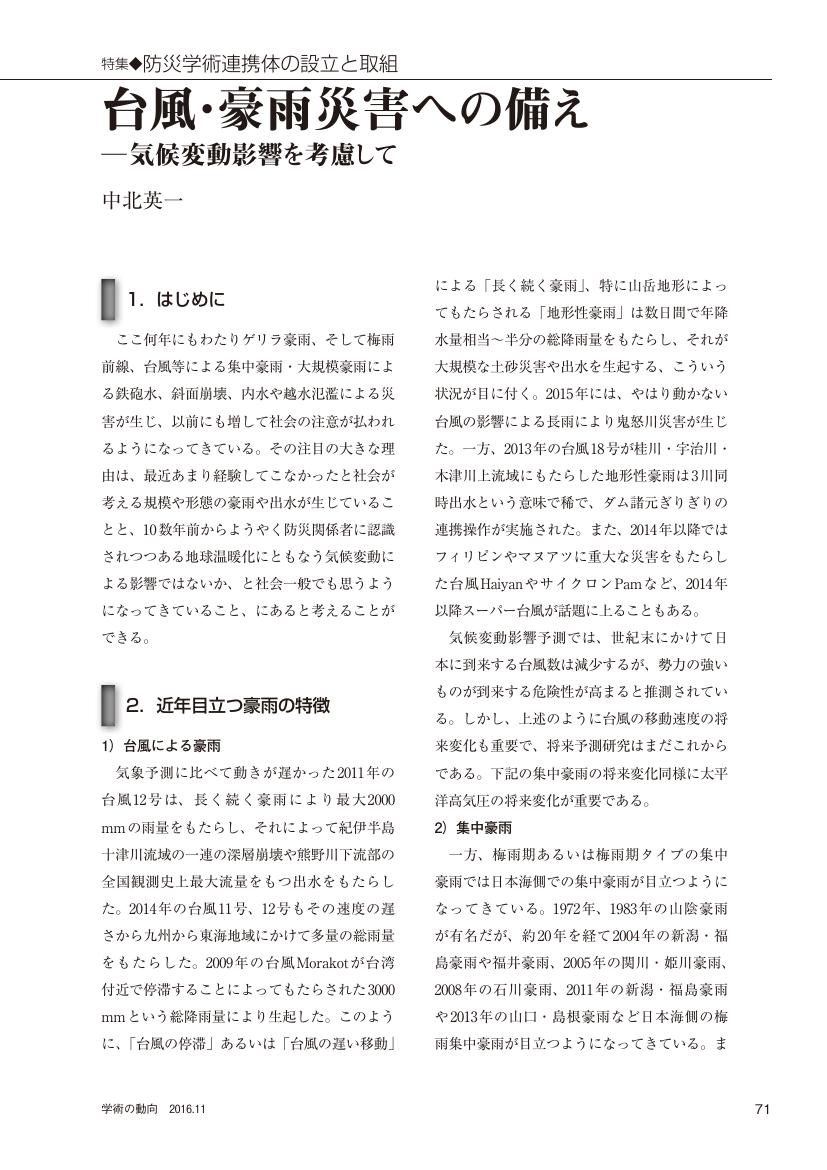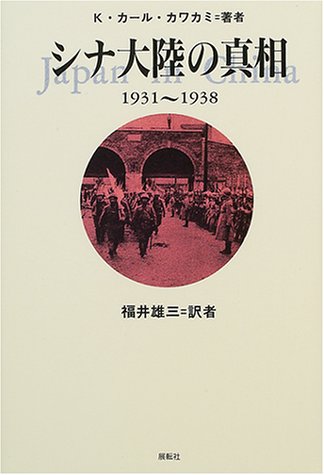1 0 0 0 OA 産学連携型PBL授業における質問を活用した振り返り手法の検討
- 著者
- 舘野 泰一 森永 雄太
- 出版者
- 一般社団法人 日本教育工学会
- 雑誌
- 日本教育工学会論文誌 (ISSN:13498290)
- 巻号頁・発行日
- vol.39, no.Suppl, pp.97-100, 2016-01-25 (Released:2016-02-12)
- 参考文献数
- 6
本研究は,大学における産学連携型PBL(Project-Based-Learning)授業において,質問を活用した振り返り手法を導入し,その効果について検証した.具体的には,「質問会議」(清宮 2008)と呼ばれる手法を用いて,グループワークの進め方に関する振り返りを行った.本研究では,この手法が,グループワークの進め方の改善に役立ったかについて検証した.分析に用いたデータは,1.学生が記入したアンケート,2.アクション・ラーニング・コーチ(ALC)が記入したワークシート,3.振り返り中のプロトコルデータである.分析の結果,質問を活用した振り返りは,グループワークの改善に役立つことが示唆された.
1 0 0 0 OA 一斉授業における子どもの発話スタイル : 小学5年の社会科授業における教室談話の質的分析
- 著者
- 藤江 康彦
- 出版者
- 一般社団法人 日本発達心理学会
- 雑誌
- 発達心理学研究 (ISSN:09159029)
- 巻号頁・発行日
- vol.10, no.2, pp.125-135, 1999-11-15 (Released:2017-07-20)
本研究の目的は, 一斉授業において, 子どもが独自の発話スタイルをもつことを明らかにし, 独自の発話スタイルをもつことの意味を検討することである。小学5年生の社会科単元「日本の水産業」の一斉授業 (計7時間) に対し事例の解釈的分析とカテゴリーの数量的分析を併用し, 発話対象と発話内容の点から2名の対象児の発話スタイルを比較検討した。その結果, 対象児の発話スタイルは次の点で異なっていた。一人は学級全体, 教師, ひとりごとと, 発話対象を柔軟に切り替えていた。発話内容は学業的内容と「おかしみ」を混在させたり切り替えたりしていた。もう一人は教師を主たる発話対象とし, 課題解決の結果を直截的に表出していた。また, それぞれの発話スタイルには次のような意味があった。一人の, 発話対象や発話内容の柔軟な使い分けには, 自分の好きなように課題に敢り組むと同時に他者との関係性上の軋礫を回避し, 安定した授業参加を目指す意味があった。もう一人の, 教師との閉鎖的なやりとりには, ほかの子どもとの関係性が不安定であるため, 教師との相互作用によって心理的安定を求めるという意味があった。
1 0 0 0 OA 台風・豪雨災害への備え ─気候変動影響を考慮して
- 著者
- 中北 英一
- 出版者
- 公益財団法人 日本学術協力財団
- 雑誌
- 学術の動向 (ISSN:13423363)
- 巻号頁・発行日
- vol.21, no.11, pp.11_71-11_74, 2016-11-01 (Released:2017-03-03)
1 0 0 0 OA 敦煌本降魔変(牢度叉闘聖変)画巻について
- 著者
- 秋山 光和
- 雑誌
- 美術研究 = The bijutsu kenkiu : the journal of art studies
- 巻号頁・発行日
- no.187, pp.1-35, 1957-03-11
This scroll-painting, labelled Manuscrit Chinois 4524 in La Bibliothèque Nationale in Paris where it is preserved, was introduced for the first time in 1947, and its facsimile, with notes by Madame Nicole Vandier-Nicholas, was published near the end of 1954. Thanks to the kindness of Madame M. R. Guignard, I had an opportunity to examine it in 1951. In view of its importance in the history of Oriental painting, I wish to give here a brief report of my studies. The scroll, lacking its first and last portions, is 27cm. in width (vertical measurement) and 574 cm. in length (horizontal). It contains a story about the construction of the vihāra and garden - Jetavana dedicated to Sakyamuni : it is a portion of the story in which six “heretics” or non-Buddhists, with Raudraksa as their spokesman, try to prevent Sudatta from donating the estate for the Jetavana. In the presence of the king, they engage in a contest of magic power with Sariputra, representing the Buddha's disciples. The heretics are defeated and converted to the Buddhist faith. The story is given in various Buddhist scriptures, the later ones describing it in more intricate forms. The Hsien-yü-ching, a collection of Buddhist legends in Khotan, edited by Chinese monks in the fifth century (455), narrates the competition in a series of six bouts. Later on, after the eighth century, the story began to be told in monasteries in China to secular people in an interesting, easily understandable manner called suchiang (popular sermons) which enhanced the story with literary ornaments. The text of these su-chiang is recorded in several versions in manuscripts entitled chiang-mo pien-wên (evil-subduing story) discovered at Tun-huang. Of these the copy in the collection of Mr. Hu Shih-chih (a small portion at the beginning of which is kept by the British Museum as “Stein 5511”; see Fig. 1) is nearly perfect. The chiang-mo pien-wên is in the characteristic form of pien-wên, consisting of alternate repetitions of narration in prose and verse (in this case each line consisting of seven characters). The competition between Raudraksa and Sariputra is told in the following six scenes: (The six matches are the same as those described in the Hsien-yü-ching, but are given in a different order.) (1) Raudraksa with his magic causes a mountain to appear; Sariputra transforms himself into Vajrapani and smashes it. (2) Raudraksa turns himself into a big buffalo, but Sariputra, transforming himself into a lion, defeats it. (3) Raudraksa creates a beautiful lake; Sariputra, in the figure of a white six-tusked elephant, drinks up the entive water. (4) Raudraksa calls forth a terrific dragon; Sariputra invokes the giant bird Garuda, which pecks the dragon to death. (5) Raudraksa, assuming the form of a demon, attacks Sariputra, who summons Vaisravana to conquer him. (6) Raudraksa produces a big tree; Sariputra calls on the wind god to blow it down. Thus beaten in all matches, the heretics are converted to Buddhism. The scroll under discussion, of which the beginning and the end are now missing (Pl. V & Fig. 5) begins with the middle part of the match (1) and goes through (2) to (5) in the order as. given in the pien-wên, ending with the beginning portion of (6). It is to be noted that the text of this scroll consists only of the stanzas, each inscribed on the reverse side of the paper near the end of each scene to which it pertains (each scene being about 120 cm. long). The fact indicates that probably while the scroll was being shown to the audience to illustrate the story. The text was read from the reverse side. We have literary sources which suggest a close interrelation between the pien-wên and painting. The existence of this scroll is an actual proof attesting to such interrelation. The magic competition of Sariputra and Raudraksa is a theme used quite frequently in murals in the Tun-huang area. The cave No. 9 in the western Ch’ien--fc-tung group has an example presumed to date back to the Northern Wei or Sui Dynasty; at Ch’ien-fo--tung there are twelve, and at Wanfo-hsia in An-hsi there are three. (Of these, eight at Ch’ien-fo-tung are reproduced in Pelliot : Les Giottes de Touen-houang, and one at Wan-fo-hsia is illustrated in Stein : Serindia.) Excepting the one (Fig. 9) at the Cave No. 149 in the Pelliot system, dated about 686 and differing in composition from others, all these are datable in the second half of the ninth to the end of the tenth centuries, and are approximately similar in composition. In all probability they were painted in conformity with a certain prototype. Furthermore, examination, through Pelliot's notes, of the text (given at the end of this article), inscribed in cartouches on the painting at the Cave No. 8, reveals that it contains at least ten passages which are faithful quotations from the chiang-mo pien-wên. From these facts we are led to believe that the murals, dealing with the competition between Satiputra and Raudraksa, which were painted very frequently during the ninth to tenth centuries, were derived from the chiang-mo pien-wên, and that they began to have a prescribed form when they were enriched with additional elements in detailed parts to improve their compositions as wall-paintings. The scroll-painting brought back by Pelliot does not reveal such conventions as are noticed in the murals. Most likely the scroll was painted a little earlier, porhaps in the first half of the ninth century. Its crude but powerful manner of depiction carries the same fresh vigour as that of popular literature which the pien-wên was.
1 0 0 0 前衛 : 日本共産党中央委員会理論政治誌
- 出版者
- 日本共産党中央委員会
- 巻号頁・発行日
- vol.(10), no.597, 1990-10
This research is a study of a case where the process innovation of small and medium-sized restaurants located in tourist spots is realized by introducing a visitor number prediction formula using big data and improving customer management. With reference to the value chain framework shown in M.E. Porter, the author edited and created a value chain model for small and medium-sized restaurants located in tourist areas. This study focused on triggering innovation in customer management as part of support activities in the value chain. In the example, by utilizing the customer information accumulated in the POS cash register and big data such as the weather and the number of nights, the number of visitors is predicted with an accuracy close to 90%, thereby eliminating the loss of purchase and managing labor and personnel. The result was that the efficiency was improved, and the treatment of employees was improved.
- 著者
- 竹内洋介編著
- 出版者
- 東洋大學アジア文化研究所
- 巻号頁・発行日
- 2011
1 0 0 0 OA 翻刻「琵琶秘曲泣幽霊」 -富山大学蔵本『臥遊奇談』より、ハーン「耳なし芳一」原話-
- 著者
- 近藤 清兄
- 出版者
- 聖霊女子短期大学
- 雑誌
- 聖霊女子短期大学 紀要 (ISSN:0286844X)
- 巻号頁・発行日
- vol.48, pp.49-55, 2020 (Released:2020-12-01)
- 著者
- 居城 弘
- 出版者
- 静岡大学人文学部
- 雑誌
- 靜岡大学法経研究 (ISSN:02872005)
- 巻号頁・発行日
- vol.23, no.2-4, pp.367-405, 1975-03-15
1 0 0 0 OA 知覚制御理論と自由エネルギー原理の比較に関する理論的考察
- 著者
- 金築 優
- 出版者
- 公益社団法人 日本心理学会
- 雑誌
- 日本心理学会大会発表論文集 日本心理学会第85回大会 (ISSN:24337609)
- 巻号頁・発行日
- pp.PA-010, 2021 (Released:2022-03-30)
知覚制御理論(perceptual control theory:PCT;Powers, 1973)と自由エネルギー原理(free energy principle:FEP;Friston, 2010)は共に,計算論的に行動の機能を説明する理論である。PCTとFEPは,ある程度の共通点もあるが,異なる点も多々あり,この2つの理論を比較することによって,両理論における新たな研究課題を見出すことが期待される。PCTは,脳は制御する対象を特定化する役割を果たしていると考えるが,FEPは,脳はサプライズを最小化させる役割を担っていると考えている。PCTにおける制御の特徴は,行動によって知覚を制御すると捉える点である。一方,FEPにおいて,予測(prediction)が重要な役割を果たしており,予測誤差の最小化が重視される。PCTは,予測なしに,制御が可能であることを主張する。FEPは,知覚と運動によって,予測誤差を最小化させていると主張する。予測の定義をどのように捉えるかによって,両理論がオーバーラップする部分は異なってくると考えられる。
- 著者
- 大野 正博
- 雑誌
- 朝日法学論集 = The Asahi law review, Asahi University School of Law (ISSN:09150072)
- 巻号頁・発行日
- vol.43, pp.119-152, 2012-10-31
1 0 0 0 OA 地下鉄を有する名古屋における津波の浸水解析
- 著者
- 中島 勇介 武田 誠 久納 匠 松尾 直規
- 出版者
- 公益社団法人 土木学会
- 雑誌
- 土木学会論文集B1(水工学) (ISSN:2185467X)
- 巻号頁・発行日
- vol.73, no.4, pp.I_1465-I_1470, 2017 (Released:2018-02-28)
- 参考文献数
- 10
近年,大規模な浸水災害に関する検討が進められている.その中で,都市の地下空間の浸水に対する脆弱性が指摘され,検討も進められているが,まだ十分な状況とはいえない.本研究では,津波を外力とする浸水災害について,名古屋を対象に地下鉄の浸水に着目した数値解析的研究を行った.ここでは,津波解析モデルおよびネスティングモデルを構築し,地下鉄を有する都市の浸水解析を実施した.本研究により,内閣府で想定されている東海・東南海・南海地震による津波では,堤防が無い(崩れた)場合には大規模な浸水被害となるが,堤防が有る場合には浸水被害も小さいことが示された.また,堤防が無い場合,地下鉄名港線では水没する危険性も示されたが,実際には地下への流入を防ぐ対策が採られており,その対策の効果検証は今後の課題として残った.
1 0 0 0 OA N-gram統計を用いた近代短歌テキストの分析
- 著者
- 村田 祐菜
- 雑誌
- 研究報告人文科学とコンピュータ(CH) (ISSN:21888957)
- 巻号頁・発行日
- vol.2019-CH-120, no.9, pp.1-5, 2019-05-04
近代短歌結社の一つである 「アララギ」 は,大正五年 ~ 昭和初期にかけて島木赤彦,斎藤茂吉,中村憲吉,古泉千樫,釈迢空らの同人を中心に,歌壇において大きな影響力を持った.彼らが歌壇において隆盛を極めた一因として結社意識の強さが指摘できるが,具体的な短歌表現に基づいて彼らの表現意識の共通点を明らかにした研究は少ない.本発表では短歌テキストに N-gram 統計を用いたテキスト分析の手法を用いて,同人間の短歌表現の分析を行った.
1 0 0 0 市制町村制并理由書 . 労働保護論
1 0 0 0 The real Japanese question
- 著者
- by K.K. Kawakami
- 出版者
- Macmillan
- 巻号頁・発行日
- 1921
1 0 0 0 A history of the Japanese arts
1 0 0 0 What Japan thinks
- 著者
- edited by K.K. Kawakami
- 出版者
- Macmillan
- 巻号頁・発行日
- 1921
1 0 0 0 Japan in world politics
- 著者
- by K.K. Kawakami
- 出版者
- Macmillan
- 巻号頁・発行日
- 1917
1 0 0 0 シナ大陸の真相 : 1931〜1938
- 著者
- K.カール・カワカミ著 福井雄三訳
- 出版者
- 展転社
- 巻号頁・発行日
- 2001


